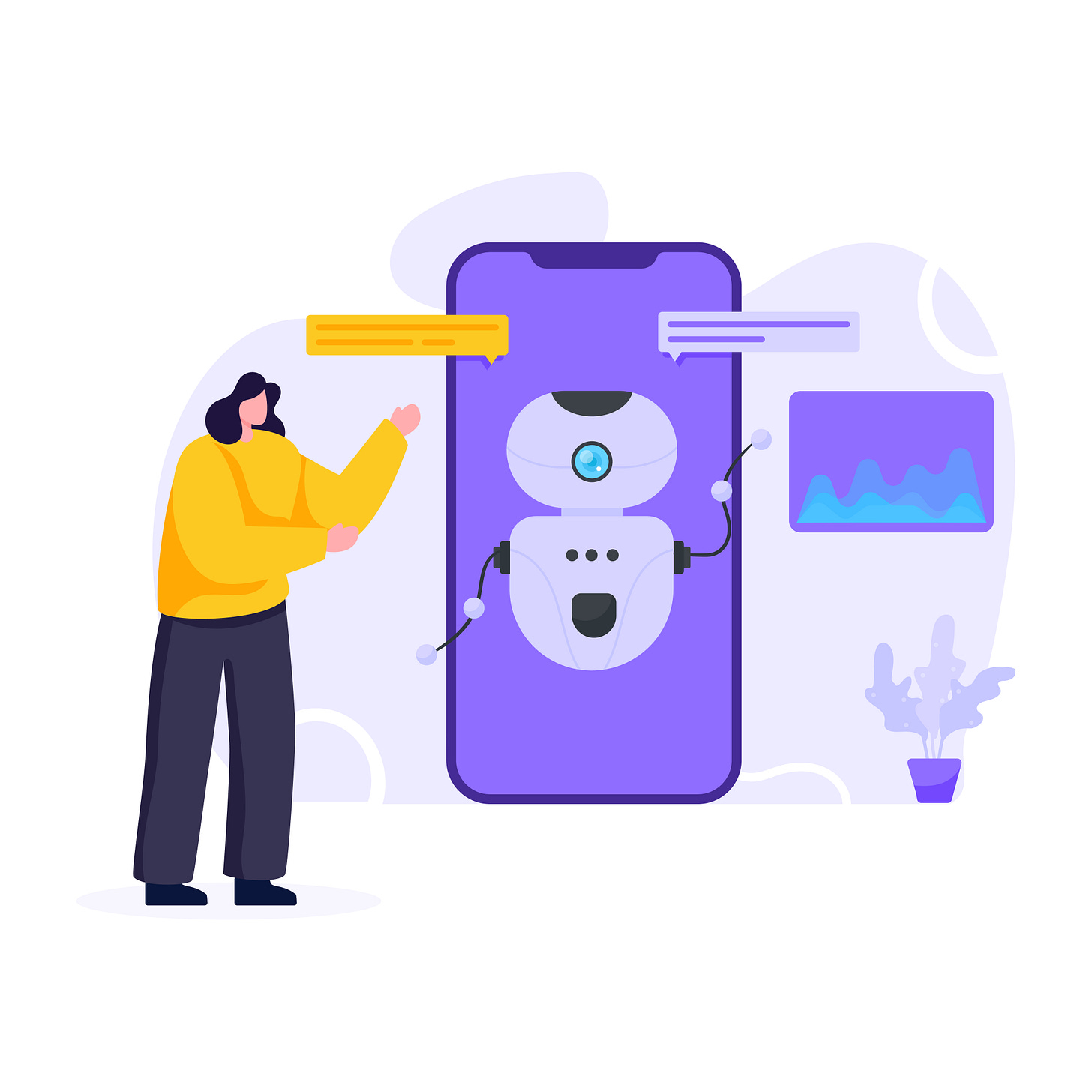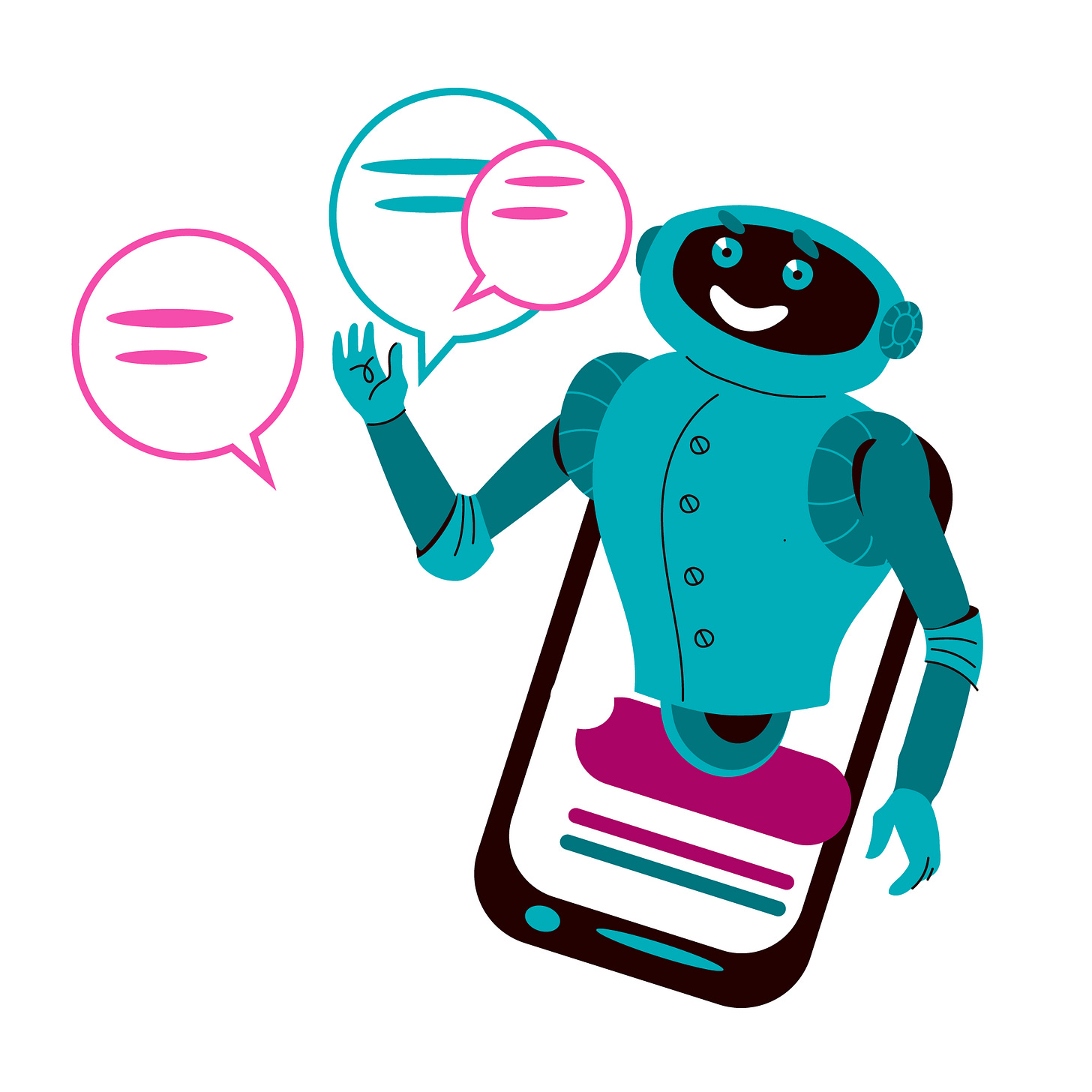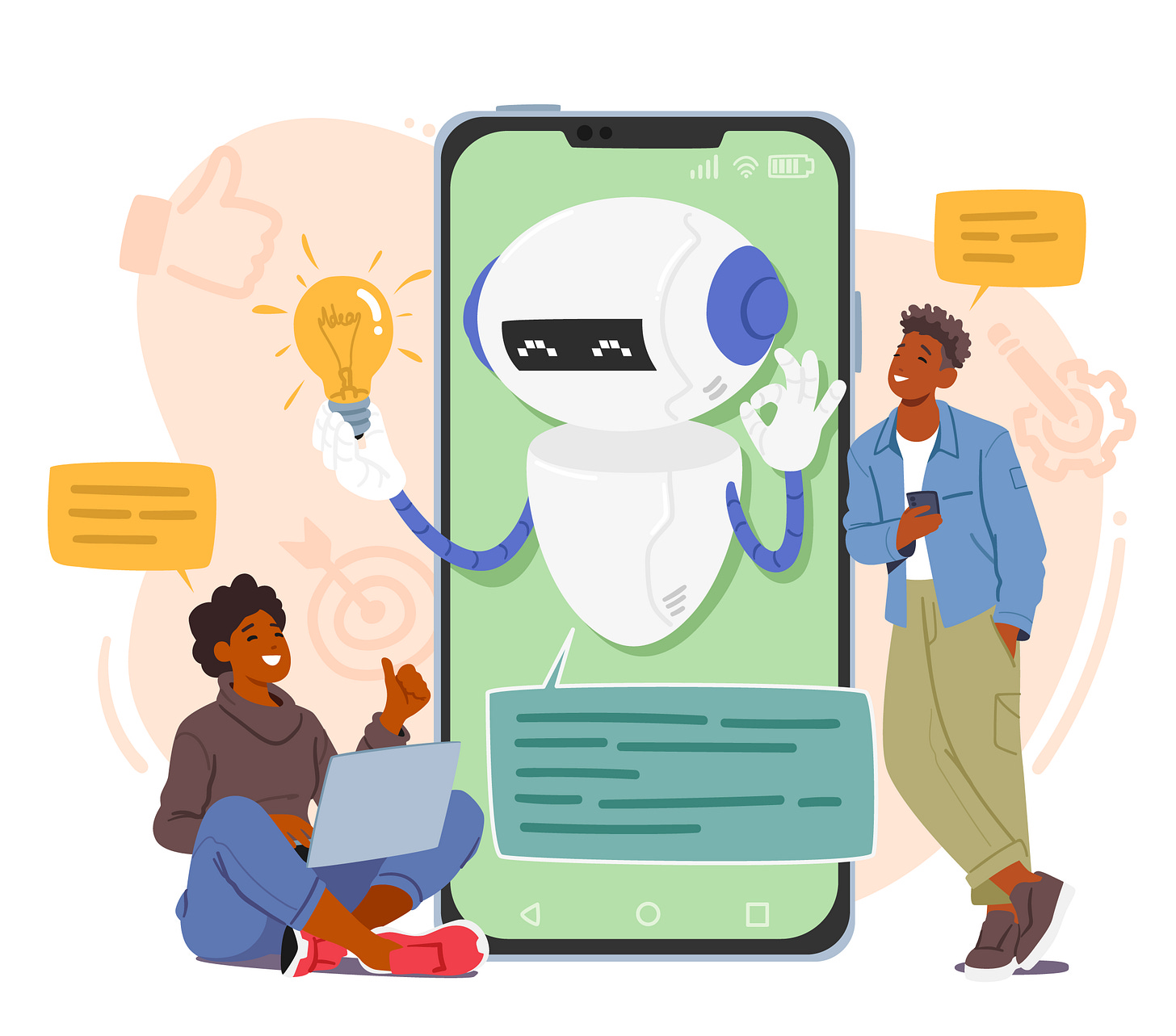AI-Powered Language Learning: Your Personal Guide to Smarter, Faster Fluency
Discover how AI-powered chatbots, translation tools, and real-time conversation partners can help you learn a new language with ease.
Ever accidentally ordered something… unexpected while trying to speak another language? Well, fortunately we have AI to save us from this linguistic embarrassment. Whether you want to impress locals on vacation or hold a real conversation, AI can be your personal language coach—free from awkward judgment and on your schedule, at your own pace.
AI translation tools like Google Translate and DeepL have already changed how we cross language barriers, but they're just the beginning. AI isn't just a translator—it's also a powerful learning tool that can help you learn a new language in a way that's fun, personalized, and stress-free.
From using AI chatbots for conversational practice to leveraging real-time translations as a study aid, AI can make language learning feel more intuitive and immersive. But can AI actually teach you a language, or is it just a high-tech crutch?
That’s what we’re here to explore. This article takes a deep dive into the synergy between AI translation and language acquisition. We’ll break down the benefits, the potential pitfalls, and the practical ways to integrate AI into your learning journey—whether you're a casual traveler just trying to survive a vacation or someone looking to truly master a new language.
AI as Your Personal Language Coach: Interactive, Adaptive, and Always Available
So how exactly can AI help you learn a language? One of the hardest parts of learning a new language is finding opportunities to practice. AI can help fill that gap by acting as an interactive language coach, always available to engage in conversation, correct mistakes, and adapt to your learning style. Imagine having a conversation partner who is always available, never gets impatient, and provides personalized feedback. That’s what AI can offer.
Real-Time Conversational Practice
Many AI tools—especially large language models (LLMs) like ChatGPT—can simulate realistic conversations in your target language. For example, you can practice ordering food at a restaurant or debating the best sci-fi movies, AI chatbots can respond naturally, adjusting their vocabulary and sentence complexity to match your skill level. Unlike human conversation partners, AI doesn’t get impatient, making it a great tool for repetition and confidence-building.
One of the biggest hurdles when learning a new language is talking to someone without freezing up. Practicing with another human can feel a bit intimidating, especially if you're afraid of mixing up your cappuccino order with something far less… coffee-like.
That's where AI chatbots come in—conversation partners who never judge your mistakes and are always eager to chat, at any hour. They're patient, helpful, and ready to adjust to your comfort level.
Here are a few simple prompts you might find useful to get started right away (remember that many models have voice mode that you use for these conversations):
Ordering Coffee (Beginner French):
"Pretend you're a barista at a café in Paris. Let's have a conversation in French where I order a coffee, and you recommend a pastry. Correct my mistakes and keep your responses simple."Calling for Reservations (Intermediate Japanese):
"I'm planning to call a hotel in Tokyo. Let's roleplay in Japanese—I’ll ask about rooms, prices, and local attractions. Speak naturally but help me if I stumble."Everyday Conversations (Casual Practice for Italian):
"Act as a friendly local I meet at a café in Rome. We'll chat casually in Italian about sights to visit, local food, and general travel tips. Correct me as needed!"
These prompts aren't just practice—they’re mini adventures in language learning, letting you build real conversational confidence without the pressure of perfection. Try them out and let AI help you find your words (and your confidence).
Personalized Learning Experience
Beyond just conversation practice, AI can tailor its responses based on your learning needs. Need to focus on business phrases for work? Want to perfect your pronunciation? AI can generate customized practice exercises, roleplay scenarios, and even provide feedback on grammar and sentence structure. It's like having a private tutor who's always happy to adjust their lesson plan on the fly—and won't get annoyed if you ask to repeat something... again.
Ready to give it a try? Here are some practical prompts to personalize your AI language-learning experience:
Work Smarter, Not Harder (Business-Focused Learning):
"I'm preparing for a work meeting in Spanish. Help me practice key business phrases I might use for introducing myself, asking questions, and wrapping up a meeting. Correct me if I slip up!"Polishing Pronunciation (Gentle Feedback):
"I'm practicing my Spanish accent. Here's a sentence I'd like help with: '¿Dónde puedo encontrar un buen restaurante cerca de aquí?' Can you offer some pronunciation tips and show me how a native might say it?"Travel Essentials (Customized Phrases):
"I'll be traveling around Rome and need some basic Italian phrases for restaurants, shops, and public transportation. Give me five essential phrases, with quick tips on pronunciation and when to use them."
On-the-Spot Translation Help (When You're Stuck):
"I need to explain to a Spanish-speaking plumber that the bathroom sink is leaking under the cabinet. Help me craft a clear, simple explanation with the right vocabulary, and include how to ask when they can come fix it."
Try out one of these prompts—or come up with your own—to create a learning experience tailored exactly to you, your needs, and your unique language goals. With AI, personalized practice is not just possible—it’s easy and fun.
How Does This Compare to Traditional Apps Like DuoLingo?
With all these personalized features, you might wonder how AI chatbots compare to popular language learning apps. DuoLingo is like following a textbook—it guides you through structured lessons with its gamified approach. And it works great for many people! But using an AI chatbot is more like having a conversation partner who's ready to talk about anything. Want to practice ordering dessert in Spanish? Or discuss your favorite movies in French? LLMs let you jump right in without following a preset curriculum. Combining both approaches gives you the best of both worlds—structure when you need it, and freestyle practice when you're feeling adventurous.
AI won’t replace human interaction entirely (your high school Spanish teacher can breathe a sigh of relief), but it’s a powerful supplement that makes language practice more accessible, affordable, and flexible. And speaking of saving your hard-earned cash, let's talk about how AI can help you learn a language without emptying your wallet.
Saving Money with AI Language Tools: Ditch the Expensive Courses
Language learning has traditionally been a costly endeavor, with expenses ranging from tutors and in-person classes to premium app subscriptions and pricey textbooks. AI tools offer a more affordable alternative, giving learners access to high-quality language practice without the hefty price tag.
Free or Low-Cost AI-Powered Learning
Unlike traditional methods that often require ongoing fees, many AI-powered language tools are free or available at a significantly lower cost. AI tools can generate custom practice exercises, suggest vocabulary drills, and even roleplay as a conversation partner—all without requiring a monthly subscription. Even if you choose a paid AI tool, the flexibility of using it on your own terms often makes it a much more budget-friendly option.
Creating Your Own Learning Materials
One of AI’s biggest advantages is its ability to generate personalized content. Instead of purchasing pre-made workbooks or courses, you can use AI to create:
Custom vocabulary lists tailored to your interests or profession
Practice quizzes and flashcards
Writing prompts and interactive dialogue exercises
This approach puts you in control of your learning experience, allowing you to focus on the areas that matter most without spending extra money on materials that may not be relevant to you.
With just a simple prompt, you can instantly generate customized quizzes, flashcards, or conversation starters that fit your goals perfectly—no textbook required. Here are a few easy-to-use prompts to get you started making your very own personalized learning materials:
Customized Vocabulary (Food & Cooking):
"Create a vocabulary list in Italian focused on cooking terms and ingredients. Include 10 words, each with a simple example sentence showing how I'd use them in a kitchen."Flashcards for Quick Practice:
"Help me make flashcards in French for common travel scenarios, like asking directions, ordering at a restaurant, or checking into a hotel. Include English translations and pronunciation hints."Interactive Dialogue Practice:
"Write a short dialogue in German between a tourist and a local market vendor. Include phrases for asking about prices, local recommendations, and bargaining politely. Keep it casual and conversational."
Try these prompts as a starting point—or experiment with your own ideas—to make your learning more engaging, practical, and (let’s be honest) way more enjoyable. Because language learning shouldn't feel like homework—it should feel like an adventure tailored specifically to you.
Making the Most of Free AI Chatbots
Many LLMs are accessible for free or for a low cost, making them an ideal alternative to costly tutors or structured courses. Even a basic AI chatbot can help you refine grammar, practice pronunciation, and get real-time corrections on your writing. While AI won’t replace the nuanced feedback of a human teacher, it can provide valuable guidance and reinforcement—at no extra cost.
AI makes language learning more accessible than ever, removing many of the financial barriers that have traditionally kept people from achieving fluency. But while AI can be an incredible resource, it’s important to remember that it’s not a perfect solution. Next, let’s explore some of the limitations and ethical considerations of using AI in language learning.
The Limitations and Ethical Considerations of AI in Language Learning
AI is a powerful tool for language learners, but it’s not without its drawbacks. Understanding its limitations and ethical concerns can help you make the most of it while avoiding potential pitfalls.
AI’s Blind Spots: Culture, Context, and Nuance
While AI excels at translating words and grammar, it often struggles with cultural nuance, slang, and humor. Many language learners find that AI-generated translations, while technically correct, can sound unnatural or miss important contextual meanings. For instance, if you ask AI to translate "it's raining cats and dogs" into Spanish literally, you might end up saying something that makes locals think you've lost your mind instead of using the equivalent expression "está lloviendo a cántaros" (it's raining pitchers).
Over-Reliance: The Risk of Skipping Real Conversations
AI can provide an excellent practice ground, but relying on it too much can create a false sense of fluency. Real-world conversations involve accents, speech variations, and unpredictable interactions that AI can’t fully replicate. It’s important to balance AI practice with real human interaction to develop well-rounded language skills.
Ethical Considerations: Bias, Accuracy, and Privacy
Like all AI applications, language-learning models can reflect biases present in their training data. This means translations and responses may sometimes reinforce stereotypes or inaccuracies. Additionally, AI-generated content isn’t always 100% reliable, so learners should double-check key information when accuracy is essential.
Privacy is another concern. Many AI language tools require internet access and store user interactions for training purposes. If you’re using AI for personal or professional communication, it’s worth considering how your data is handled and whether privacy settings can be adjusted.
AI is an incredible tool for language learners, but as we've seen, it's most effective when used as a supplement rather than a sole method of learning. With these benefits and limitations in mind, let's wrap up with some final thoughts on how to integrate AI into your language-learning journey.
Conclusion: AI as a Tool for Personalized Learning
AI is transforming language learning by making it more accessible, adaptable, and affordable. Its ability to personalize practice, generate custom exercises, and provide real-time feedback makes it a valuable tool for learners of all levels. However, it works best as part of a well-rounded approach that includes real-world practice and human interaction.
If you’re curious about how AI can support your language-learning journey, experiment with different tools and techniques. Try using AI chatbots for casual conversations, generate personalized vocabulary lists, or create practice exercises tailored to your goals. See what works for you—and if you discover an approach that clicks, share your experience! After all, language learning is a journey better traveled together—even if some of your travel companions happen to be algorithms.




